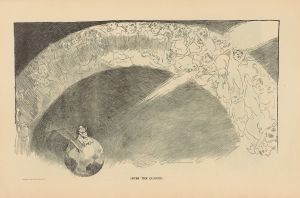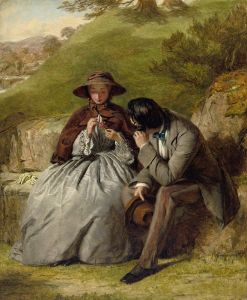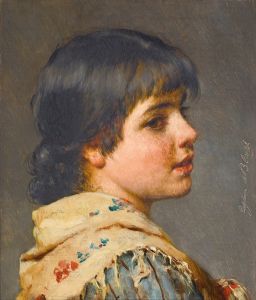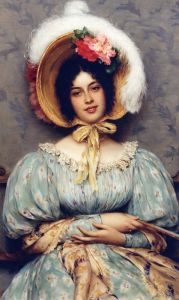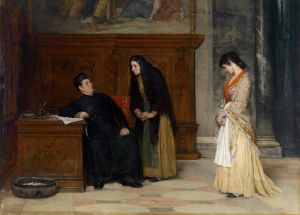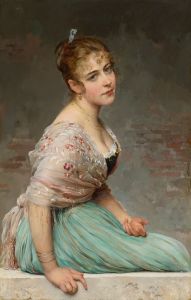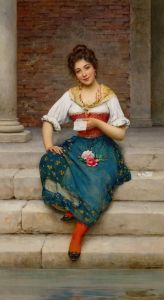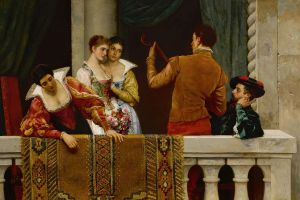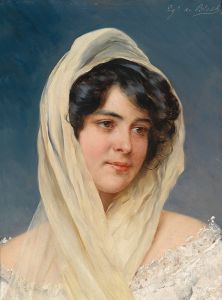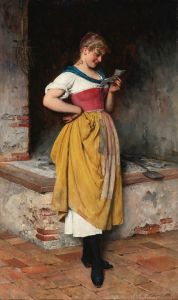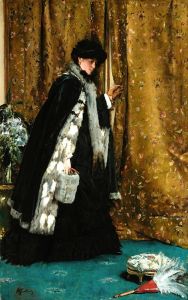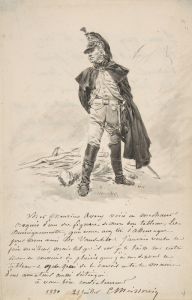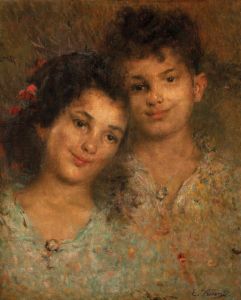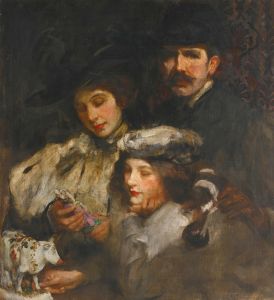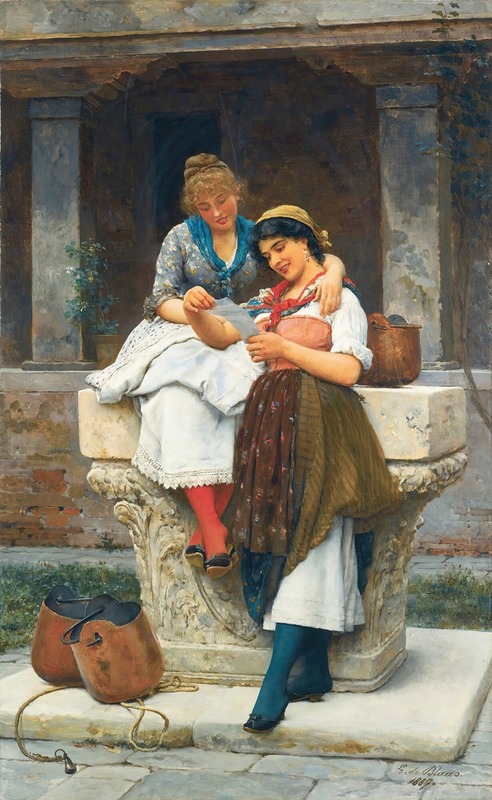
The Love Letter
A hand-painted replica of Eugen von Blaas’s masterpiece The Love Letter, meticulously crafted by professional artists to capture the true essence of the original. Each piece is created with museum-quality canvas and rare mineral pigments, carefully painted by experienced artists with delicate brushstrokes and rich, layered colors to perfectly recreate the texture of the original artwork. Unlike machine-printed reproductions, this hand-painted version brings the painting to life, infused with the artist’s emotions and skill in every stroke. Whether for personal collection or home decoration, it instantly elevates the artistic atmosphere of any space.
Eugen von Blaas, an Italian painter of Austrian descent, is renowned for his genre paintings that capture the everyday life and social interactions of the 19th century. One of his notable works is "The Love Letter," which exemplifies his skill in depicting intimate and narrative scenes with a focus on detail and emotion.
"The Love Letter" is a quintessential example of von Blaas's ability to portray the subtleties of human interaction and emotion. The painting typically features a young woman, often depicted in a domestic setting, engaged in the act of reading or writing a letter. This scene is a common motif in von Blaas's work, reflecting the social customs and romantic ideals of the time. The artist's attention to detail is evident in the careful rendering of the woman's attire, the textures of the fabrics, and the delicate expressions that convey a sense of anticipation or contemplation.
Von Blaas's work is characterized by its vibrant color palette and meticulous attention to detail, which bring the scenes to life. His paintings often feature a warm and inviting atmosphere, achieved through the use of soft lighting and harmonious compositions. In "The Love Letter," these elements combine to create a sense of intimacy and immediacy, drawing the viewer into the private world of the subject.
The setting of "The Love Letter" is typically a well-appointed interior, reflecting the bourgeois lifestyle of the period. The furnishings and decor are rendered with precision, providing a backdrop that enhances the narrative without overwhelming it. This attention to setting is a hallmark of von Blaas's work, as it situates the characters within a specific social and cultural context.
Eugen von Blaas was part of a broader movement of 19th-century artists who focused on genre painting, a style that depicted scenes from everyday life. This movement was particularly popular in Europe, where artists sought to capture the nuances of social interaction and the beauty of ordinary moments. Von Blaas's contribution to this genre is significant, as his paintings offer a window into the customs and aesthetics of his time.
"The Love Letter" is representative of von Blaas's broader oeuvre, which often explores themes of love, courtship, and communication. These themes are universal and timeless, allowing his work to resonate with audiences even today. The painting's focus on a solitary figure engaged in a personal moment invites viewers to reflect on their own experiences of love and longing.
Eugen von Blaas's paintings, including "The Love Letter," continue to be celebrated for their technical excellence and emotional depth. His work is held in high regard by collectors and art enthusiasts, and his paintings are featured in various public and private collections around the world. Through his art, von Blaas offers a glimpse into the past, capturing the elegance and charm of a bygone era with sensitivity and grace.





